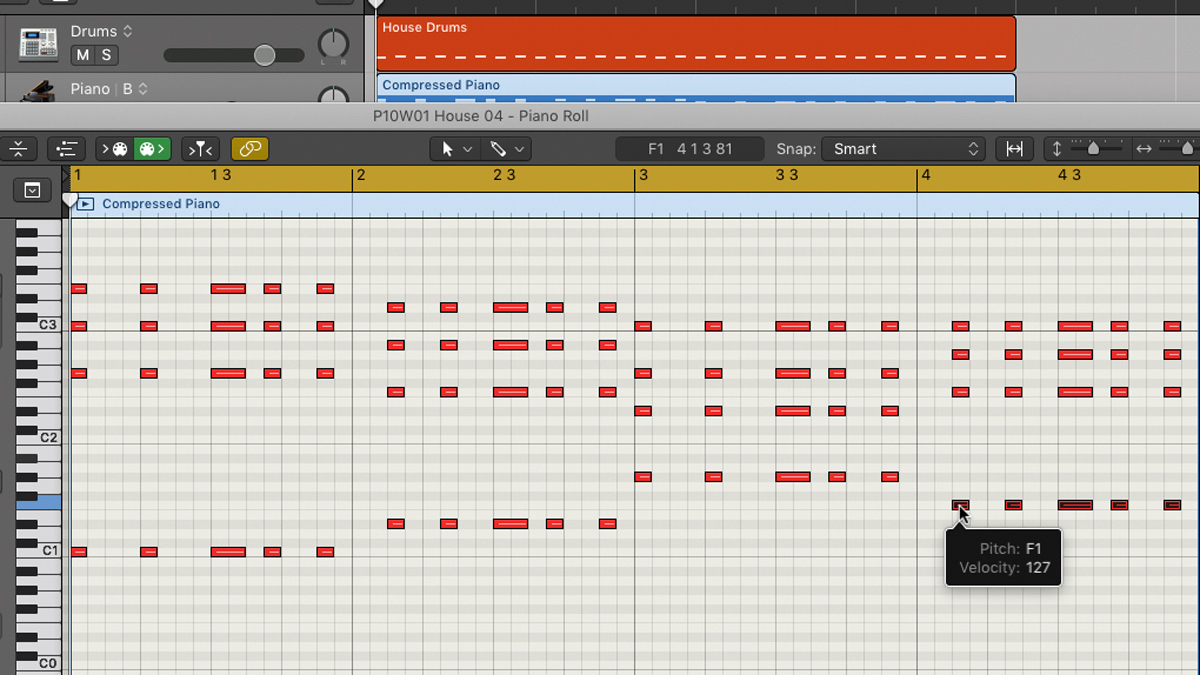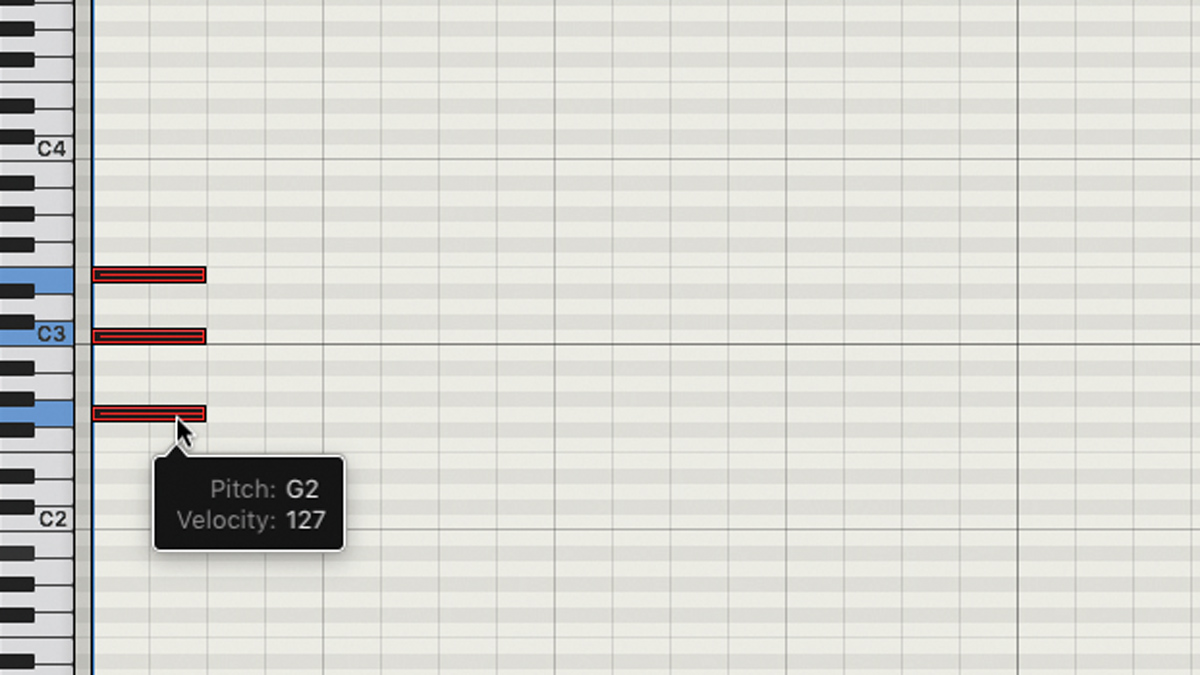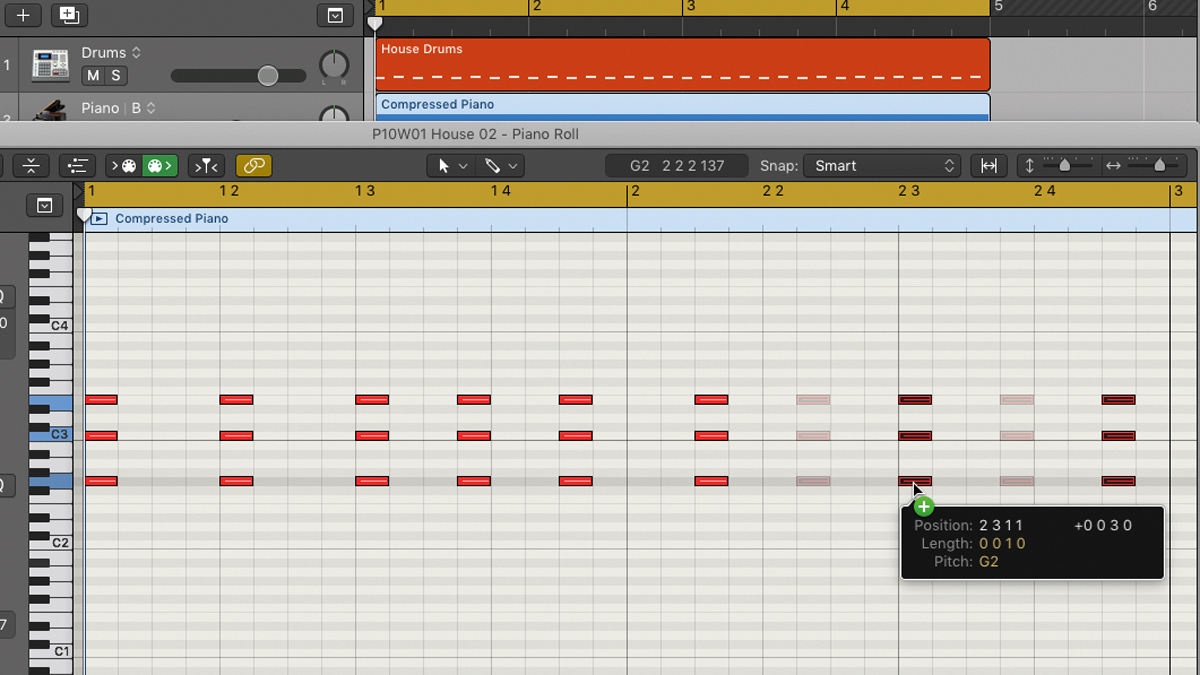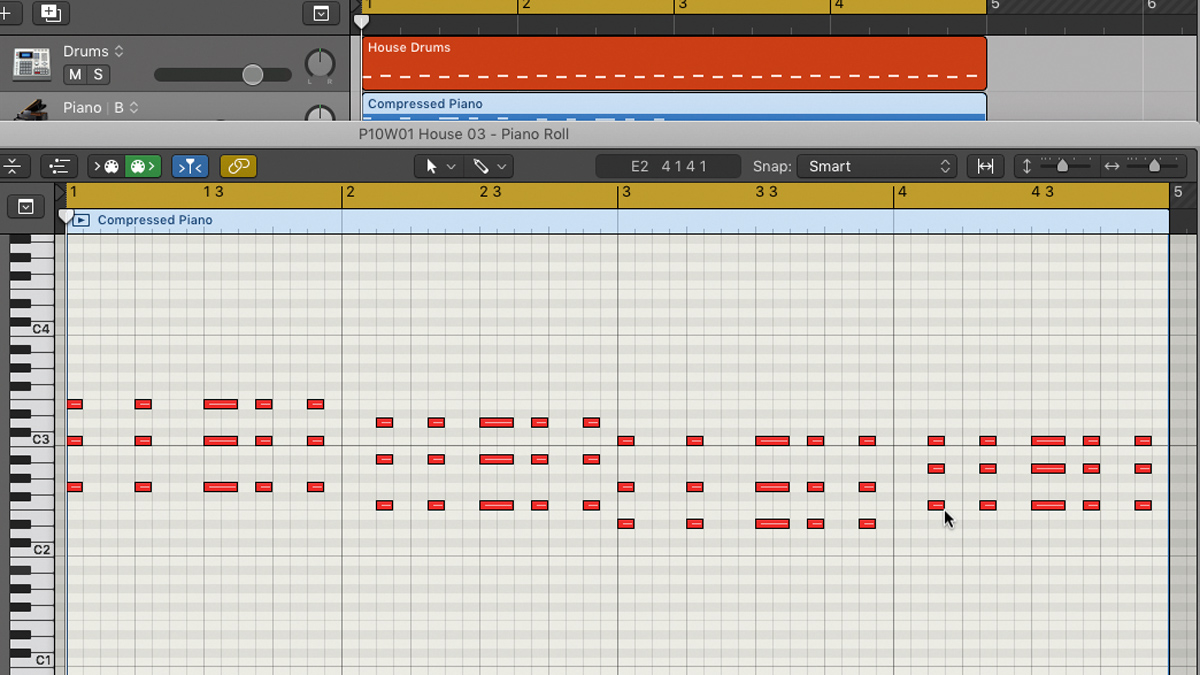Create classic Chicago house spread piano chords
A dance music staple explained

Two-handed piano jams are the staple diet of classic house, so let’s look at how to program one from scratch.
We’ll start with some basic chords, then work on the rhythm, before using some music theory magic to create extra house authenticity.

Step 1: Start with an empty project or DAW session at about 124bpm and create a software instrument track loaded with a piano sound. Open the piano roll and draw in the notes G2, C3 and E3. Make this C major chord last for a duration of one 16th-note.

Step 2: Copy and paste the chord seven times, for eight chords in total, one on every quarter-note beat over two bars. Select the fourth chord in each bar and move them one 16th-note earlier. Then move the first two chords in the second bar two 16ths earlier, and the third chord three 16ths earlier. Lastly, copy and paste the final two chords three 16ths later.

Step 3: Next, double the duration of the third chord in each bar to two 16th notes. Copy and paste these two bars to make a four-bar section, then transpose the chords in bar 2 down by two semitones to make Bb major (F-Bb-D). Rearrange the notes in the third chord to make a 1st inversion C minor (Eb-G-C), then make the fourth chord an F major (F-A-C).

Step 4: Now for the magic. Copy and paste the lowest note of each chord to form a left-hand bassline. Place the new notes on C1 in bar 1, Eb1 in bar 2, Ab1 in bar 3 and F1 in bar 4. By adding new bass notes to the original right-hand triads to form new chords, this effectively transforms our vanilla C-Bb-Cm-F progression into a house-tastic C-Bb11-Abmaj7-F.
- Explore our pick of the best digital pianos
Want all the hottest music and gear news, reviews, deals, features and more, direct to your inbox? Sign up here.
Computer Music magazine is the world’s best selling publication dedicated solely to making great music with your Mac or PC computer. Each issue it brings its lucky readers the best in cutting-edge tutorials, need-to-know, expert software reviews and even all the tools you actually need to make great music today, courtesy of our legendary CM Plugin Suite.
